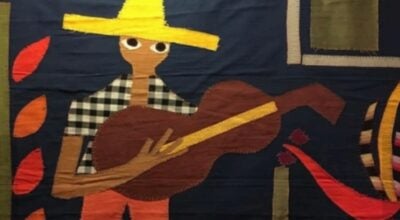Gardeners: Do No Harm
Published 10:15 pm Wednesday, May 1, 2019
Along with multiple volunteer groups, individuals and government entities in Polk County and throughout WNC and the Upstate, the Polk County Appearance Commission is concerned not only with rampaging kudzu, but also with a growing list of other invasive plants, many of which are still sold in local nurseries and garden centers. Our group has recently agreed that our grant award program will not only encourage landscape submissions to include primarily native plants, but will also reject proposals that include invasive plants.
Why does the Appearance Commission care about what species of plants landowners buy and install?
The beauty of our region is one of our most important assets, both for our residents and visitors. The foothills, farms and forested areas define Polk County, and our native vegetation both visually defines our place in the world, and provides food and shelter for wildlife along with many other complex ecosystem systems (purification of air and water, climate regulation, flood control, pollination, waste decomposition among others). Our extensive mix of hardwoods, hemlocks and pines; understory of dogwoods, redbuds, serviceberries, mountain laurel, and rhododendrons along with a multitude of spring flowering ephemerals are envied worldwide. Our native flora is revered for its beauty and astounding diversity. Tours and hikes are organized around the spring ephemeral burst, lush forests, and Fall leaf turning. If we allow the continued infestation of invasive plants, our beautiful and diverse forests will be severely diminished as they are outcompeted by invasive exotic plants and the ecosystem will be damaged. Our goal is to promote the beautiful diversity that is our heritage, both for our own delight, but also to protect the ecosystem. (Douglas Tallamy’s “Bringing Nature Home, How You Can Sustain Wildlife with Native Plants” does a masterful job of showing the critical importance of native plants).
What is our criteria for determining an invasive plant? Currently we are using the 2011 “Do Not Buy Invasive Exotic Plant List Pocket Guide For Western North Carolina” published by the Southern Appalachian Cooperative Weed Management Partnership. It lists trees, shrubs, vines, and ground covers which are displacing and overrunning our stunning native plants. The brochure also helpfully suggests native alternatives to these invasive plants. We expect this list to expand as more introduced species “go rogue”. It was quite apparent a few weeks ago that Oregon grape holly (Mahonia aquifolium), with its bright yellow gold flowers, has made significant inroads into forested areas. Its clusters of blue berries are taken by birds and it’s off to the races! At the same time we watch the stunning Spring progression of our native flora it becomes apparent that invasives are making inroads into our forests; the Bradford Pear, once thought to be one of the most beautiful (and heavily marketed) small trees, has escaped cultivation and is choking roadsides; wisteria is literally strangling and bringing down large trees; Vinca minor (Periwinkle) has been flowering for weeks and is covering forested areas to the exclusion of all else, Burning Bush is flowering now (visually insignificant), and will soon be setting fruit and spreading prolifically to form a dense, impenetrable thicket. No need to mention Kudzu….
What can we do to help protect our native flora and reduce the impact of invasive exotic plants? The easiest starting point is to not buy or plant invasive plants. Encourage your favorite garden center or nursery to phase out selling invasives. There are many resources beyond the guide mentioned above to help determine what is invasive, and suggest good native substitutes. The North Carolina Native Plant Society www.ncwildflower.org provides excellent information.
Secondly, remove as many of the invasive plants on your property as possible. If it is a daunting task, perhaps start by preventing the plant from setting seed.
Third, plant natives and encourage your friends and neighbors to do the same. Encourage your favorite garden center to carry your “must have” list of native plants.
Spread the message that gardening well protects our gorgeous ecosystem!
– Submitted by Joe Cooper, Polk County Appearance Commission





